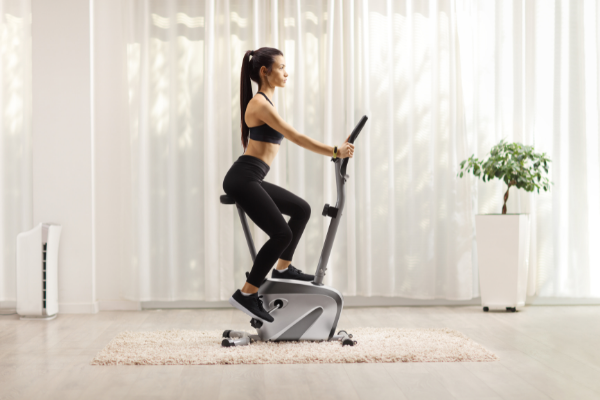
We’ve all heard them and have probably believed at least one of these exercise myths. There’s so much information out there about exercising and working out, but not all of it is accurate. For example, lifting weights won’t bulk you up, you shouldn’t only focus on cardio for weight loss and spot training isn’t a thing. In this post, we’re busting some of the most popular exercise myths and telling you what the facts are. This will totally change your workout game and make you healthier, stronger and more fit!
8 Exercise Myths Explained
Myth #1: You Should Stretch Before You Workout
It’s commonly believed that stretching loosens up your muscles pre-workout, will make you nice and limber and reduce the chance of muscle pulls and tears. However, research has found that not only does stretching cool muscles not offer any benefits, it can actually do more harm than good. It can reduce performance and lead to injury. Instead, do a series of warm up exercises that increase blood flow to your muscles for 5 to 15 minutes before your main workout. This prepares them for exercise and lowers the risk of injuries.
Myth #2: Lifting Weights Will Bulk You Up
Lots of people think that if you lift weights you’ll get big and bulky and it’s simply not true. There are ways to get bulky by lifting weights with specific training, but weight training in general doesn’t lead to bulk. It’s important that this myth is busted because there are many health benefits to lifting weights regularly. It can improve your heart health, keep your tendons and joints lubricated, boost your metabolism, increase your energy and lower your risk of everyday injuries.
Myth #3: You Should Only Focus on Cardio for Weight Loss
While cardio does help you burn fat and lose weight, it shouldn’t be the only thing you turn to for weight loss. Doing all cardio and no strength training not only gets boring, it also burns fewer calories overall. Strength training builds lean muscle mass, which increases your metabolism and decreases fat. The more muscle you build, the more calories you’ll burn, which is why strength training is so important for weight loss. Strength training workouts that double as cardio are some of the most effective you can do.
Myth #4: You Can Get a Six-Pack by Doing Crunches
Ab exercises are key for building your core muscles and toning up. However, if you don’t follow a healthy diet along with core workouts, it’s nearly impossible to get a six pack. If you have a thick layer of fat surrounding your abdomen you won’t be able to see the indentations that create the six pack, no matter how many crunches you can do.
Myth #5: If You Don’t Feel Sore the Day After You Workout, You’re Not Training Hard Enough
If you consistently feel sore the days after you workout, it could be a sign that your body’s not receiving the support it needs from your core. Pushing yourself to do tough workouts can leave you hobbling around the next day and this is likely due to over-training your global muscles, which are the larger muscles in your body like your quadriceps and biceps. There are also the local muscles (the core), which are responsible for supporting the mobility of the body’s movement. Try cross training with core development moves to improve your workouts and reduce next-day pain.
Myth #6: Doing Cardio on an Empty Stomach Will Burn More Fat
Fasting before your workout is not a good idea, plain and simple. Your body needs energy and the large muscles that power you through cardio rely heavily on carbs and fat for energy. When you run or bike on an empty stomach, your body turns to the carb and fat fragments in your bloodstream and muscle stores, rather than the fat in your fat cells to energize your workouts. Fuel up 90 minutes before your workout with something light and easy to digest, like whole wheat toast with almond butter and bananas. Drink one or two glasses of water too!
Myth #7: You Can Focus on Losing Fat From Different Body Parts
Spot training isn’t an actual thing. Fat cells are distributed across your entire body, so if you want to lose fat from a specific spot, you have to focus on losing overall body fat. High intensity interval training (HIIT) is amazing for this. Even when your workout is over, your body is still burning calories at rest as it will keep drawing oxygen at an accelerated rate. Strength training is also a great way to hit your weight loss goals, and combining HIIT with strength training is ideal for weight loss.
Myth #8: Your Workouts Should be At Least An Hour
Research has found there’s really no benefit to doing an hour workout versus a half hour workout when it comes to losing weight and fat. Those who exercise for 30 minutes can get the exact same results as those who exercise for an hour, and sometimes their results are even better. This could be because those who exercise for longer probably eat more during the day or the fact that half an hour of exercise is very doable so people have more energy to do more physical activity after their workout session.
We’ve probably all believed at least one of these exercise myths at some point. We hope you found this post informative and are able to make effective plans for your workouts moving forward.
